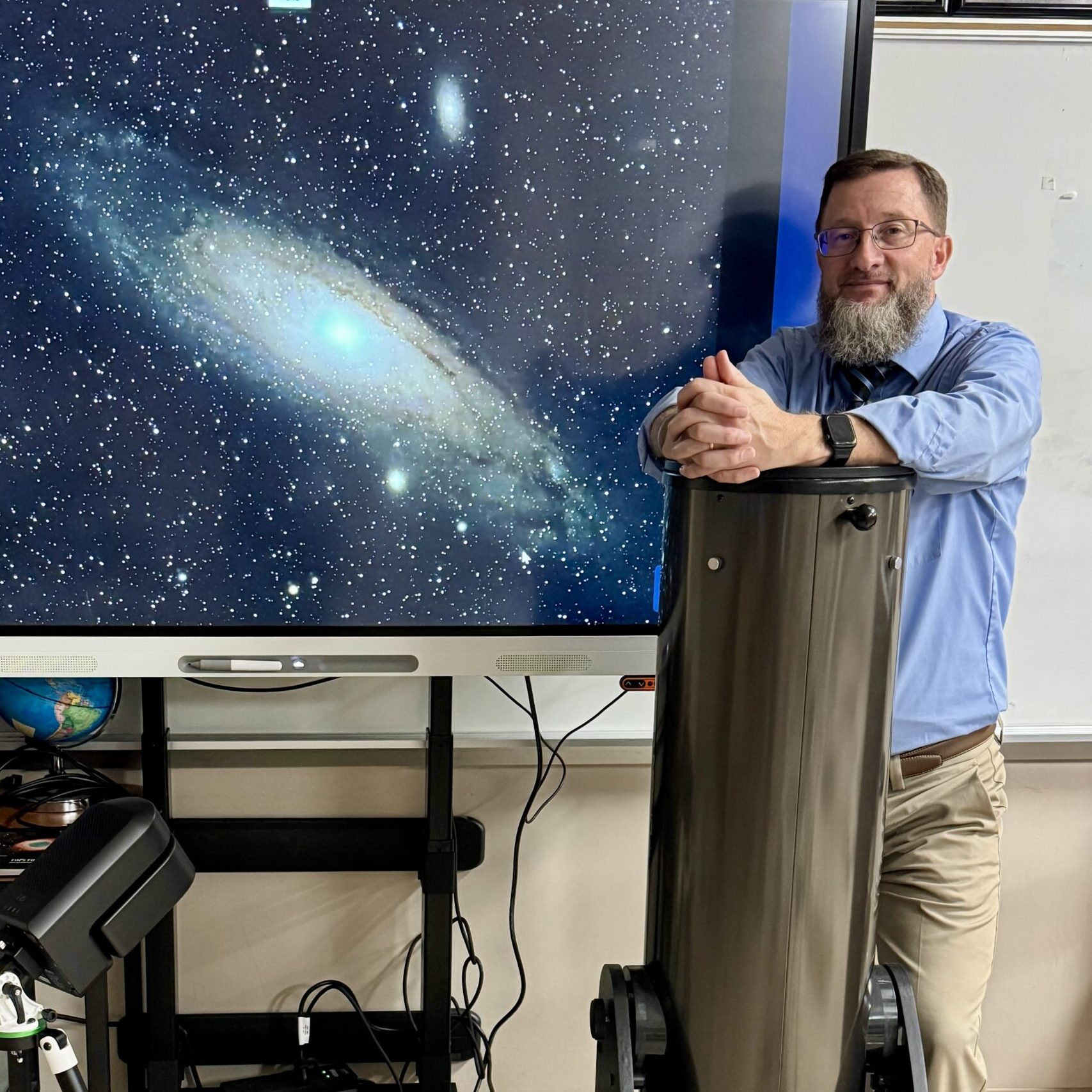Ambassadors
2025 Ambassadors

Summer Ash
Having been both a rocket scientist and an astrophysicist, Summer Ash is now harnessing her powers for science communication to bring the Universe down to Earth for those who want to reach for the stars.
As a self-professed space cadet, Summer grew up dragging friends and family out at all hours of the day or night to look up at the sky. She enjoys Jupiter, Orion, supermassive black holes and advocating for equity, accessibility, diversity, and inclusion across all STEM fields.
Summer has a bachelor’s in mechanical engineering from Stanford University and a master’s in space studies from the International Space University and worked as an aerospace engineer on the X-34 Program at Orbital Sciences Corporation (now Orbital ATK) before making the jump from low-earth orbit to intergalactic scales. She did graduate research in radio astronomy at the University of Cambridge’s Cavendish Laboratory on the evolution of radio galaxies and the effect of active galactic nuclei (a.k.a. AGN or supermassive black holes) on galaxies and galaxy clusters. Consequently, she will work AGN into everyday conversation whenever possible.
After academia, Summer transitioned to education and outreach and has worked at the World Science Festival, Columbia University, and most recently the National Radio Astronomy Observatory’s (NRAO) Very Large Array (VLA) – the world’s most scientifically productive ground-based telescope, where she was the STEAM education manager.
Summer’s freelance work has been published online in The Atlantic, Smithsonian, Scientific American, Atlas Obscura, Slate, Nautilus Magazine, SyFy.com, and Now.Space. She has hosted videos for NBC.com, the Science Forward program at CUNY’s Macaulay Honors College, and NRAO’s Baseline series. She moderated Virtual Astro Live for the Intrepid Air & Space Museum 2020 – 2023 and she was the “In-House Astrophysicist” for The Rachel Maddow Show 2009 – 2016. Summer is also a consultant for the Science & Entertainment Exchange, an arm of the National Academies of Science.
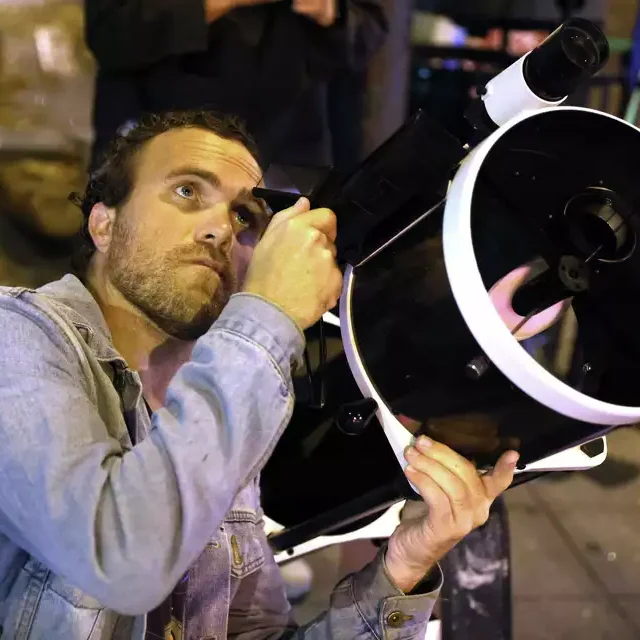
Brian Castro
Brian Castro is a sidewalk astronomer and astronomy educator in San Francisco, California. By day, he works as a software engineer for a satellite imagery company, but on clear nights, he takes a 10” Dobsonian telescope out onto the sidewalk to share his passion for the cosmos with neighbors, friends and whomever happens by. Following in the footsteps of famed astronomer John Dobson, he and his telescopes have reached around 15,000 people in San Francisco.
Brian has loved space since he was a kid, excitedly watching science documentaries and scifi shows, but only recognized his love for astronomy outreach and education after spending a summer at Bryce Canyon National Park in 2013, operating telescopes and giving talks on the habiliability (or lack thereof) of moons and planets across the solar system.
Since then, he tries to share the wonders of the Universe whenever and wherever he can. He has organized for the local chapter of The Planetary Society, solo traveled to Guatemala to personally donate telescopes to schools and instruct in their use, and even strapped a large telescope to a bicycle trailer and biked around showing Saturn to festival goers at Burning Man in the Black Rock Desert. These days, he brings a small outreach telescope on every trip he can.
Brian is thrilled to be joining the 2025 ACEAP Ambassadors, and fulfilling a long held dream of stargazing in the Atacama Desert, something he never imagined he’d also get to do at the major observatories with other astronomers. He is eager to learn as much as possible and have even more to share with the public in the future. When not showing people the stars, Brian can usually be found hiking, photographing or swing dancing.
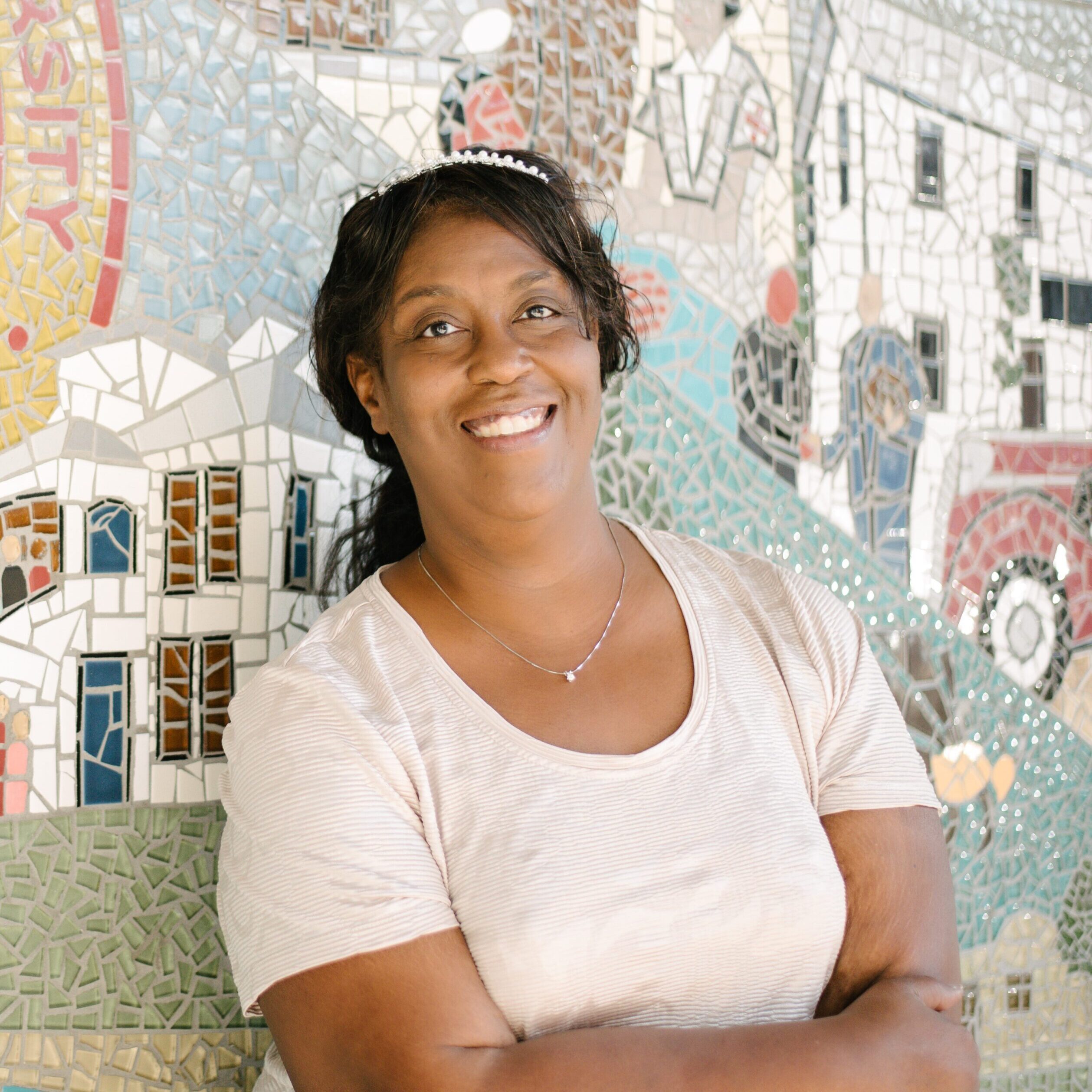
Joi Chevalier
Joi’s passion for astronomy began at age six in urban Houston, inspired by Carl Sagan and NASA’s Mission Control. She taught herself to identify constellations by lying on her family car at night with a book and flashlight. Accepted to the Air Force Academy, she chose instead to attend the University of Texas at Austin (UT).
At UT, Joi began in aerospace engineering but shifted toward interdisciplinary studies, exploring astronomy, celestial dynamics, literature, mythology, theology and cultural anthropology. She earned a Bachelor of Arts in Classics (Latin) and English, followed by an Master of Arts in English literature, specializing in British literature and technology. While pursuing her Ph.D., she was recruited by a local startup as a technical product manager and strategist.
A long-time member of the Austin Astronomical Society (AAS), Astronomers Without Borders, The Planetary Society, and the American Astronomical Society, Joi has served as AAS communications chair, member services chair, and astronomical league correspondent. She rebuilt the club’s website, launched the Fast Track skills series, hosted the Central Texas Star Party and Austin Under The Stars, and co-curated an astrophotography retrospective In Your Own Backyard at the Texas Museum of Science & Technology. She also volunteers with the Girl Scouts of Central Texas as an astronomy badge leader and serves on the International Academy of Astronautics Space Traffic Management Committee.
Recently named an ACEAP 2025 Ambassador, Joi hosted Tea, Tales, and a Telescope: Myth as Medicine and supported SXSW 2025’s NASA House with rooftop outreach and a city lawn star party. She is developing an observatory near Big Bend National Park for her 14” Dobsonian truss telescope and also owns a 6″ refractor and an S50 Seestar.
In 25 years of outreach, she has inspired hundreds—especially in Black and Brown communities—to “always look up.” As Carl Sagan said, “We are a way for the universe to know itself.”
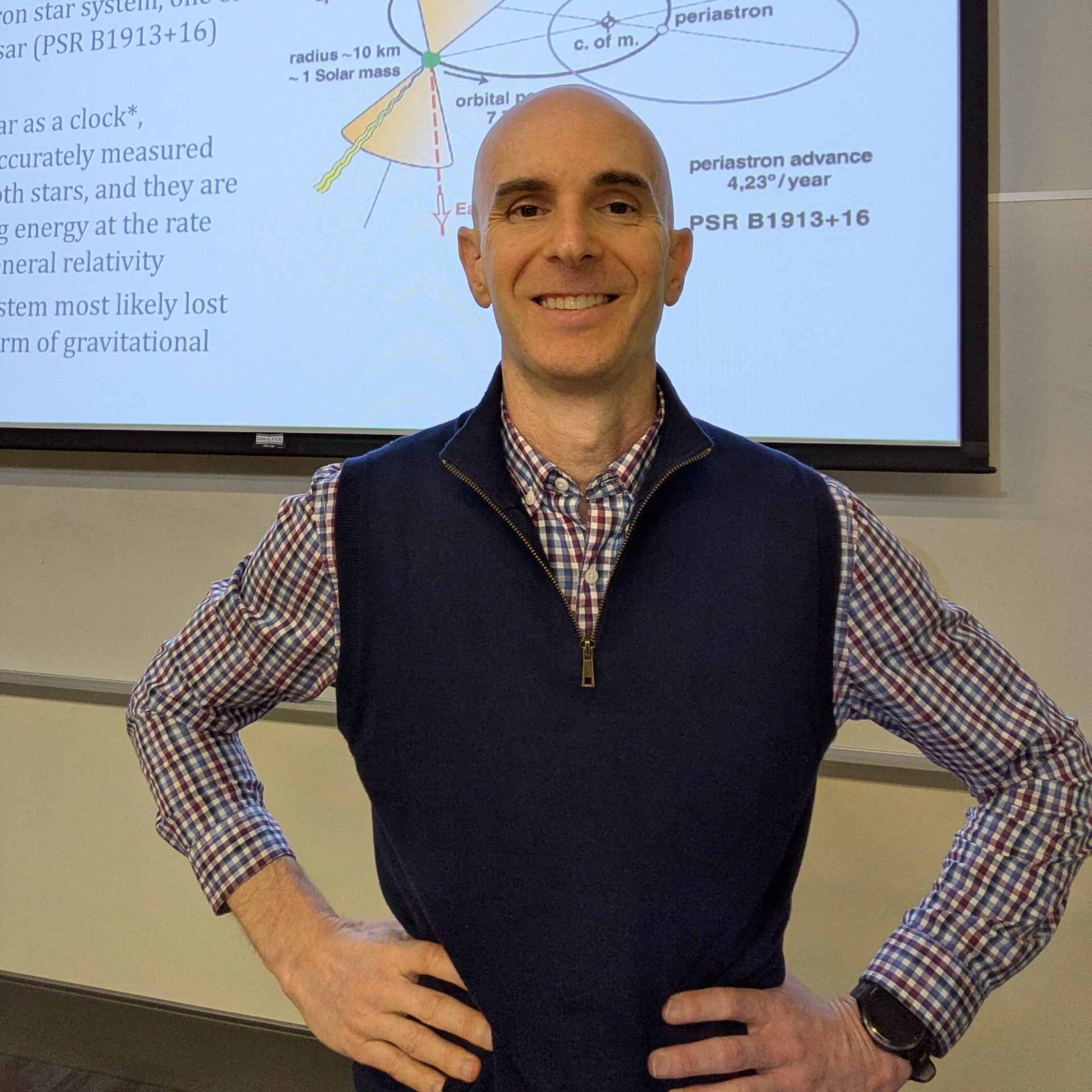
Blake Crosby
Blake Crosby is an astronomy instructor at Trident Technical College in Charleston, South Carolina. He holds a Master of Education from Arizona State University and a Master of Science in Astronomy from Swinburne University of Technology. Passionate about science education, Blake specializes in teaching introductory astronomy courses, where he emphasizes hands-on learning and the scientific process.
In the classroom, Blake integrates a range of technologies to enhance student engagement and deepen understanding of complex astronomical concepts. He also authors a monthly astronomy newsletter for the college, keeping students and colleagues informed about the latest discoveries and developments in the field.
Blake organizes regular public observing sessions on campus, fostering a sense of community and curiosity about the night sky. He is an active member of the NASA Community College Network (NCCN), collaborating with fellow educators to expand access to NASA resources and opportunities for his students.
Beyond the college, Blake is deeply involved in the amateur astronomy community. A member of the American Association of Variable Star Observers (AAVSO) for over 15 years, he co-developed and teaches the AAVSO’s online course Variable Star Classification and Light Curves. His interests include both visual observation and data analysis, particularly in the search for new variable star discoveries.
When he’s not stargazing, Blake enjoys running and cycling along Charleston’s scenic trail systems.
Luke Finley
Luke Finley is a public high school physics and astronomy educator in the Nashville, Tennessee, area. Currently in his 27th year of teaching, he took his first astronomy course as a physics undergraduate at Austin Peay State University. From that moment on, he knew his goal would be to bring astronomy to as many high school students as he could reach. He began a year-long elective in astronomy at Independence High School in 2007 that has reached over 100 students yearly and continues to the present. Over a thousand students have enjoyed “the cosmic perspective”, and have flocked to evening star party labs, “disconnecting” from their persistent digital environment. Alumni of the course have gone on to work on Mars rovers at JPL and to thrive in other NASA field centers.
After enjoying the “Summer Stars” program at NOIRLab and Kitt Peak National Observatory, Luke was inspired to begin a new student program in astroimaging. He acquired funding to purchase six “smart telescopes” that students could check out to take home. Over 20 students joined the club and learned how to use the SeeStar S50 telescope to capture and process hundreds of images from their own backyards. Even through a Bortle 7 sky, students captured splendid images of M 31, M 42, M 45 and many others.
In addition to physics and astronomy, Luke has coached multiple All-Americans and state champions in cross country and track and field. He is currently a nominee for the Astronomical Society of the Pacific’s Thomas J. Brennan Award, which recognizes excellence in high school astronomy education in North America.

Heidi Lavelle
Heidi Lavelle has been captivated by space since childhood, and her career is all about sharing that lifelong fascination. As a creative communicator, she uses her background in fine art and writing to make stories of exploration and discovery fun and accessible. This passion has been a constant throughout her career, from her early days as a public education intern at the California Coastal Commission to her time at NASA supporting social media and blogs for the International Space Station and Commercial Lunar Payload Services, as well as Houston We Have a Podcast.
Currently, Heidi works in the Astronaut Office at NASA’s Johnson Space Center in Houston, where she helps connect astronauts with schools and community groups worldwide through virtual outreach events and video messages. Her innovative approach to on-orbit crew social media recently earned her a Superior Achievement Award.
A dedicated community advocate, she has helped inspire the next generation through both art and STEM. She is currently studying community development through the University of Kansas. Her passion for community development grew from her experience serving as an AmeriCorps family and youth engagement specialist in a bilingual community school where she taught art and literacy and helped increase youth and family involvement.
A proficient Spanish speaker and a beginner German speaker, she is driven by a belief in science diplomacy and international friendship through shared initiatives. As an astronomy enthusiast and a new member of the Solar System Ambassadors, she embodies the balance of an artist, a science communicator and a global citizen, all while blending her passions to connect people to the Universe, one story at a time.
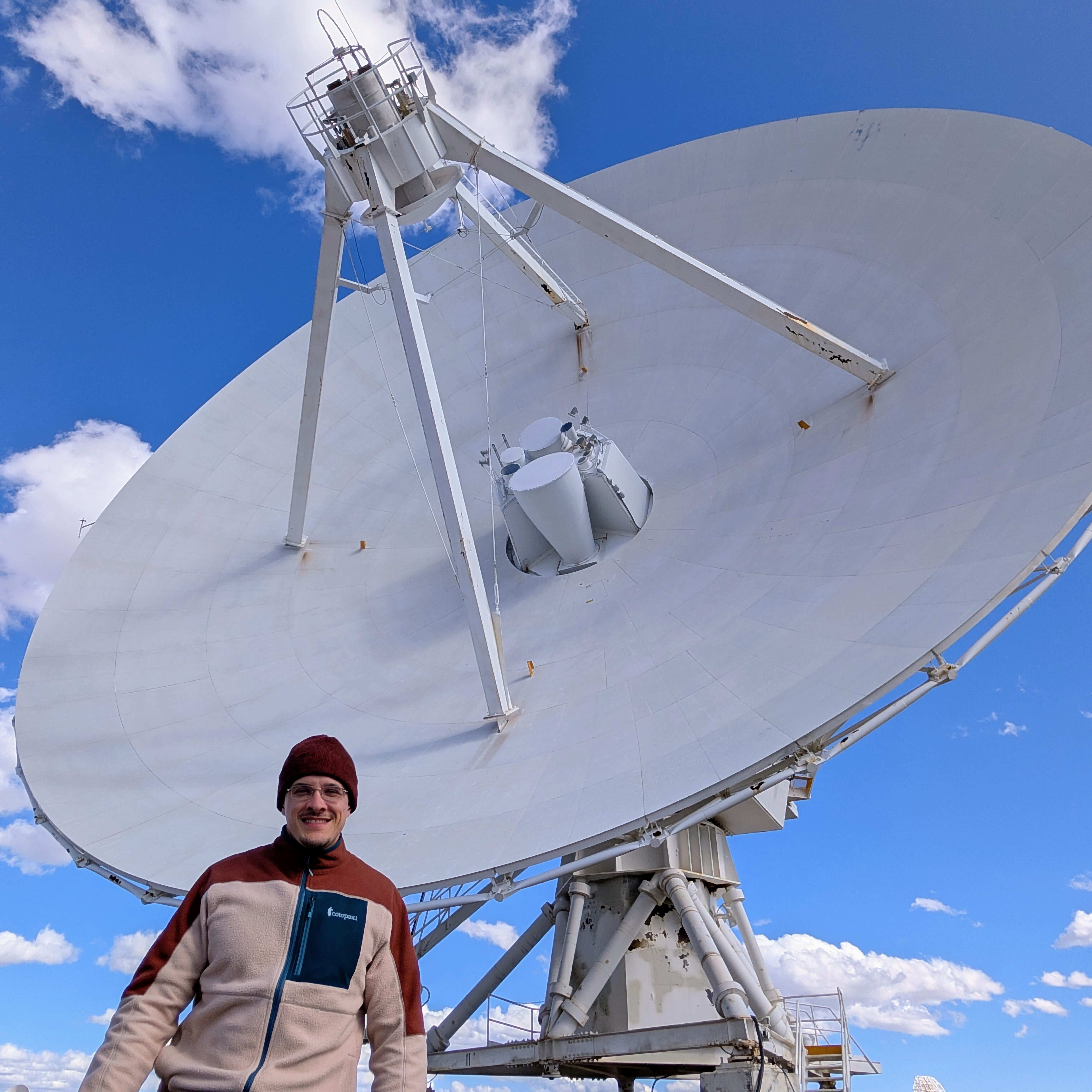
Ian MacIntire
Ian MacIntire holds both bachelor’s and master’s degrees in chemical engineering from the University of Maryland, College Park. He is currently a general engineer with the U.S. Department of Transportation’s National Highway Traffic Safety Administration, where he develops safety standards for hydrogen fuel cell vehicles, electric vehicles and compressed natural gas vehicles. Previously, Ian worked on the U.S. Navy’s aircraft oxygen systems. Ian also contributed extensively to the development of Rapid-Seal, a hemostatic gel commercialized by Medcura Inc., which is now available in major retailers such as CVS and Walgreens.
Ian is an active member of the Northern Virginia Astronomy Club (NOVAC), the Albuquerque Astronomy Society (TAAS), Cave Mountain Observatory Retreat (CMOR), and the Astronomical League. Through NOVAC, he regularly volunteers at Sky Meadows State Park for public “Astronomy for Everyone” programs, and participates in additional club observing nights and events. Ian traveled to observe the 2024 total solar eclipse and is an experienced deep-sky astronomer, focused on observing faint galaxies and nebulae from remote dark-sky sites in West Virginia. Ian’s extensive collection of specialized visual astronomy equipment supports these efforts.
Ian has visited the Very Large Array (VLA) radio telescope in New Mexico, further fueling his interest in both visual and radio astronomy. His work as both an engineer and an amateur astronomer reflects a deep commitment to advancing science, technology and public engagement with the cosmos.
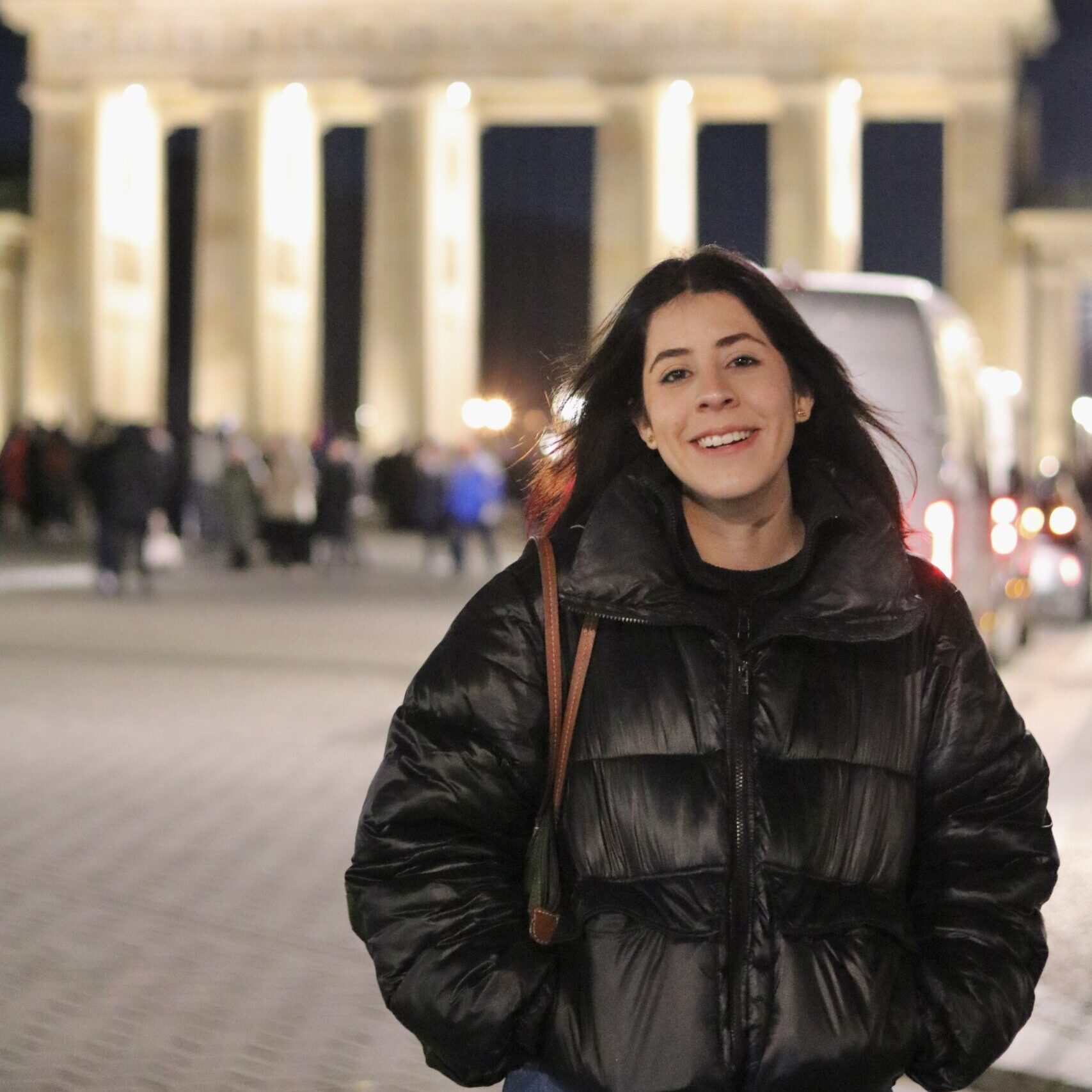
Raquel Reyes Galindo
Raquel Reyes Galindo is a Mexican engineer and science communicator with more than five years of experience sharing astronomy and space science with diverse audiences. She is currently pursuing a master’s degree in planetary sciences and space exploration in Berlin, where she continues to expand her knowledge of the solar system and planetary research.
Raquel has developed a strong career in planetary sciences and astronomy education, creating engaging content for social media platforms where she shares the excitement of space science with thousands of viewers. Her work includes short videos, live sessions and storytelling that connect scientific concepts with everyday life, making astronomy accessible and inspiring to students and the general public alike.
In addition to her online presence, she has led workshops, talks and conferences focused on astronomy and space exploration in schools, science festivals and public events. She has also participated as a speaker and judge in STEM-related activities, including hackathons and youth awards, where she encourages young people to explore scientific careers.
Through her work as a communicator and aspiring planetary scientist, Raquel seeks to build a bridge between professional astronomy and the public, especially in Latin America, where she hopes to contribute to the growth of space science initiatives. Her mission is to inspire curiosity about the Universe and motivate others to see science as a path for discovery and innovation.
Brandi Stewart
Brandi Stewart is the space science outreach coordinator for the Earth to Sky Interagency Partnership. Brandi grew up near Pittsburgh, Pennsylvania, and moved out west to complete a Master of Education in environmental education and non-profit leadership through the North Cascades Institute’s residency program. Brandi brings a background in place-based engagement, training development and program management, primarily through their work with the National Park Service. Prior to joining the Earth to Sky team in November 2024, Brandi worked for the National Park Service for almost 14 years, as an educator and interpreter at parks such as Mount Rainier, Devils Postpile, Death Valley and Grand Canyon. Her career has included snowshoeing with kids on 18 feet of snow, giving media interviews about one of the hottest recorded temperatures on Earth in 100 years, and working at the bottom of Grand Canyon for week-long tours of duty delivering programming to visitors. They currently live in and work from Grand Canyon, Arizona.
Their career has been driven by a passion for making science and nature accessible and engaging for diverse audiences. This includes developing place-based programming using natural resource phenomena to support STEM learning. Their passion is amplifying relevant, accessible and culturally responsive opportunities to welcome folks who have been historically excluded from public lands. They also want to learn more ways to make dark sky and space science resources accessible for people who are blind or visually impaired. Their approach to collaboration is built on open communication, creative problem-solving and leveraging the collective expertise of the community. (Photo Credit: National Park Service (or NPS)/Kurt Moses)
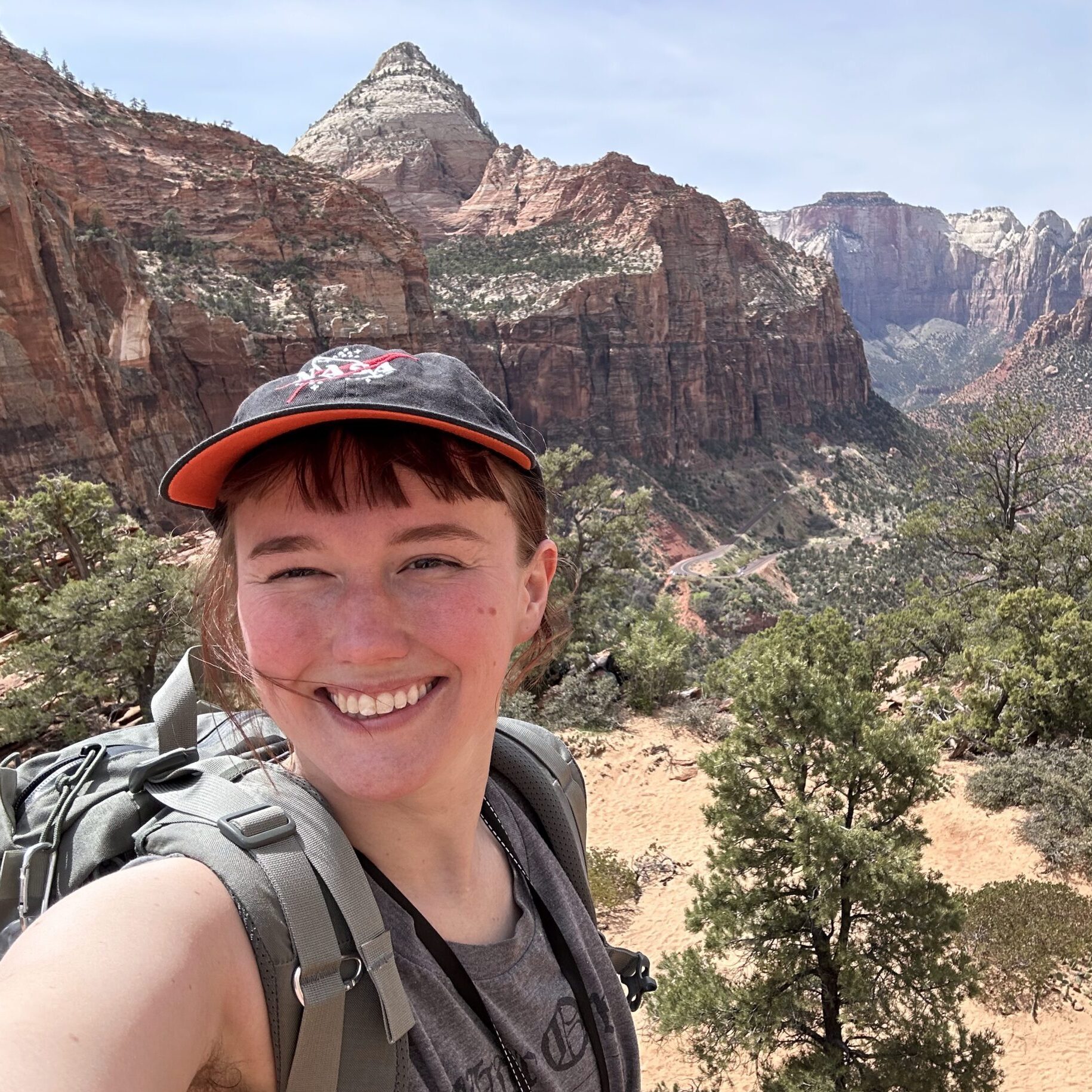
Sarah Vise
Sarah Vise is the planetarium and Science On a Sphere manager at Science Central in Fort Wayne, Indiana. Her interest in Earth and space science started as a child looking up at the Hoosier skies. However, the informal STEM education field unexpectedly grabbed hold during her time working in a planetarium while she attended university for a bachelor’s degree in physics and astronomy. It was the opportunity to show people the fascination in our world and Universe; to inspire the future generation of STEM learners and leaders – she hasn’t looked back since. Her focus is making science accessible, tangible and engaging for all. With a knack for converting high-level STEM concepts into related lessons to make every student feel empowered to succeed, her approach focuses on nurturing the next generation of diverse STEM leaders.
She serves as the Great Lakes Planetarium Association chair for Indiana and as a NASA Solar System Ambassador. She voluntarily serves on the board of Ecofest, a local non-profit that aims to create awareness, educate community, create a platform to promote sustainability, and inspire individuals and businesses alike to move towards a more sustainable future. She also serves as vice president of the Fort Wayne Astronomical Society. Sarah prides herself in each connection made with students that sparks curiosity and appreciation of the Universe around us, and being a prominent role model for future generations. Outside of her professional career, she is a world-traveller, an antique-collector, and is passionate about movies and art. She participates in a curling club during the winter and is excited to make new friends year round!

